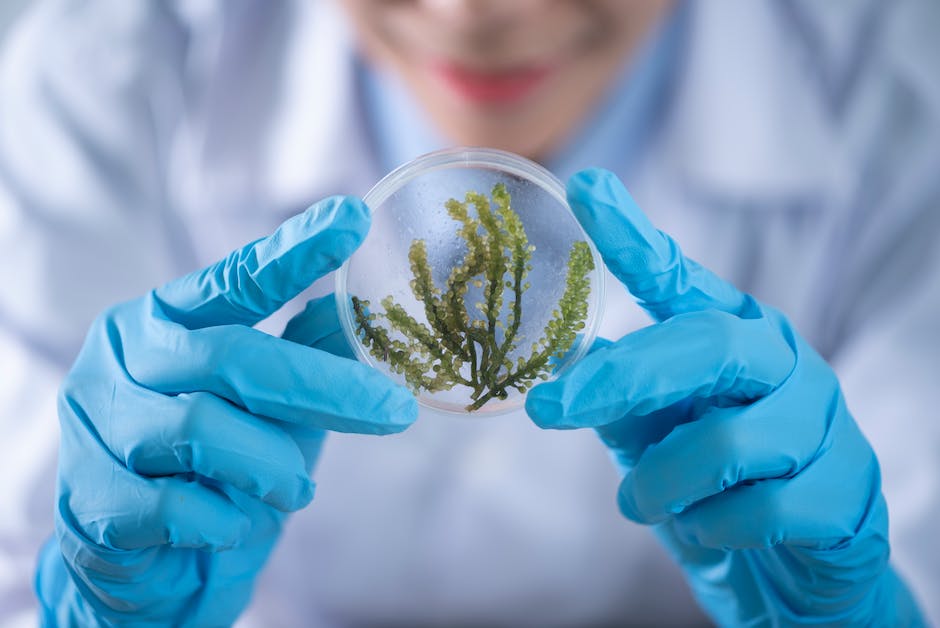Cannabis, also known as marijuana, has been a topic of intense debate and discussion in recent years. With the growing acceptance and legalization of cannabis worldwide, there has been a surge in interest surrounding its compounds, particularly cannabinoids.
Cannabinoids are the chemical compounds found in cannabis plants that interact with the body’s endocannabinoid system, producing various effects. They have gained attention for their potential therapeutic benefits, such as pain relief, reducing inflammation, and helping with anxiety and sleep disorders.
In the cannabis world, there are two types of cannabinoids: synthetic and natural. Synthetic cannabinoids are artificially created in a laboratory and are designed to mimic the effects of natural cannabinoids. On the other hand, natural cannabinoids are derived directly from the cannabis plant through extraction methods.
While both types of cannabinoids share similarities in terms of their chemical structure and interaction with the endocannabinoid system, there are significant differences between the two. Synthetic cannabinoids are typically manufactured using a combination of chemicals, whereas natural cannabinoids are cultivated from specific strains of cannabis plants.
Another crucial distinction lies in the regulation and safety profile of these compounds. Natural cannabinoids, such as THC (tetrahydrocannabinol) and CBD (cannabidiol), are subject to strict regulations and quality control measures in legal markets, ensuring their purity and potency. Synthetic cannabinoids, however, have faced numerous controversies due to their unpredictable nature and potential for harmful side effects.
The debate surrounding synthetic versus natural cannabinoids revolves around effectiveness, safety, and legality. Advocates argue that synthetic cannabinoids offer more precise control over dosage and consistency, making them suitable for pharmaceutical applications. On the other hand, critics highlight the risks associated with synthetic compounds, including increased potency, adverse reactions, and the potential for abuse.
Understanding the differences between synthetic and natural cannabinoids is crucial for consumers, healthcare professionals, and policymakers alike. By delving into their variances in manufacturing, safety, and potential applications, we can make informed decisions and contribute to the ongoing conversation surrounding cannabis and its derivatives.
In the upcoming sections of this blog post, we will explore the uses, benefits, controversies, and future implications of both synthetic and natural cannabinoids. By shedding light on these topics, we aim to provide a comprehensive understanding of this rapidly evolving field and help readers navigate the complexities of the cannabis world.
Definition and explanation of synthetic cannabinoids

Synthetic cannabinoids refer to man-made chemical compounds that are designed to mimic or replicate the effects of natural cannabinoids found in the cannabis plant. These compounds are created in laboratories using various chemical processes, and are often marketed as legal alternatives to marijuana.
Unlike natural cannabinoids, which are derived from the cannabis plant itself, synthetic cannabinoids are produced by altering the chemical structure of other existing substances. These altered compounds are then sprayed onto plant material or diluted with a liquid solvent to be smoked, vaporized, or ingested.
One of the primary reasons for the development of synthetic cannabinoids was to exploit legal loopholes and provide an alternative to marijuana that could potentially evade traditional drug tests. However, this often led to a surge in the production of dangerous and unpredictable substances that posed serious health risks.
It is important to note that synthetic cannabinoids do not offer the same level of safety and reliability as their natural counterparts. Due to their synthetic nature, these compounds can have significantly stronger effects on the body, leading to heightened intoxication, increased heart rate, elevated blood pressure, and even severe hallucinations.
Furthermore, the chemical compositions of synthetic cannabinoids can vary widely from one batch to another, meaning that users are often unaware of the specific compounds they are consuming or their potential side effects. This lack of standardization makes it difficult for authorities and healthcare professionals to regulate and control the distribution and use of synthetic cannabinoids.
The use of synthetic cannabinoids has been associated with a range of adverse health effects, including acute kidney injury, seizures, cardiovascular complications, and even death. The unpredictable nature of these compounds also makes it challenging to provide proper medical treatment in case of emergencies.
In recent years, governments and regulatory bodies around the world have taken steps to control the production, sale, and use of synthetic cannabinoids. Many countries have introduced legislation to ban specific synthetic compounds or classify them as controlled substances, aiming to protect public health and safety.
In conclusion, synthetic cannabinoids are man-made chemical compounds that attempt to replicate the effects of natural cannabinoids found in cannabis. However, their unpredictable nature, potential health risks, and lack of regulation make them a controversial and dangerous alternative to natural cannabinoids. It is crucial to prioritize the use of natural and regulated cannabis products to ensure the safety and well-being of individuals.
Definition and explanation of natural cannabinoids

Natural cannabinoids, also known as phytocannabinoids, are chemical compounds found in the cannabis plant. These compounds interact with the body’s endocannabinoid system, which regulates various physiological processes such as mood, appetite, pain sensation, and immune response.
The cannabis plant contains over 100 different natural cannabinoids, each with its own unique properties and effects. The most well-known and studied cannabinoid is delta-9-tetrahydrocannabinol (THC), which is responsible for the psychoactive effects commonly associated with marijuana use.
Another prominent natural cannabinoid is cannabidiol (CBD), which has gained significant attention in recent years due to its potential therapeutic benefits. Unlike THC, CBD does not produce psychoactive effects and is believed to have anti-inflammatory, analgesic, and anti-anxiety properties.
Aside from THC and CBD, other natural cannabinoids found in cannabis include cannabinol (CBN), cannabichromene (CBC), and cannabigerol (CBG), among others. These cannabinoids may have varying effects and potential therapeutic benefits, although research is ongoing to fully understand their properties.
Natural cannabinoids can be consumed through various methods, including smoking, vaporizing, or ingesting cannabis products. Different strains of the plant may have varying levels of cannabinoids, leading to variations in the effects experienced by users.
It is important to note that the legality and regulations surrounding natural cannabinoids can differ depending on the jurisdiction. While some countries and states have legalized the use of cannabis for medical or recreational purposes, others may still impose restrictions or consider it illegal. It is essential for individuals to understand the legal framework in their region before considering the use of natural cannabinoids.
In summary, natural cannabinoids are chemical compounds found in the cannabis plant that interact with the body’s endocannabinoid system. They have diverse effects and potential therapeutic benefits, with THC and CBD being the most well-known cannabinoids. Understanding the differences and potential uses of natural cannabinoids is crucial in navigating the complex and evolving landscape of the cannabis world.
Differences between synthetic and natural cannabinoids in terms of chemical composition and structure

In the cannabis world, there is an ongoing debate surrounding the use of synthetic and natural cannabinoids. These compounds, found in cannabis plants, have similar effects on the human body but differ significantly in their chemical composition and structure.
Natural cannabinoids, also known as phytocannabinoids, are produced by the cannabis plant itself. The most well-known natural cannabinoid is delta-9-tetrahydrocannabinol (THC), which is responsible for the psychoactive effects associated with cannabis consumption. Other naturally occurring cannabinoids include cannabidiol (CBD), cannabinol (CBN), and tetrahydrocannabivarin (THCV).
On the other hand, synthetic cannabinoids are human-made compounds that mimic the effects of natural cannabinoids. These laboratory-created substances are designed to interact with the same receptors in the body as natural cannabinoids, primarily the CB1 and CB2 receptors in the endocannabinoid system. However, synthetic cannabinoids are chemically different from their natural counterparts.
One key difference between synthetic and natural cannabinoids lies in their chemical structure. Natural cannabinoids have complex structures consisting of various carbon atoms, hydrogen atoms, and occasionally oxygen atoms. In contrast, synthetic cannabinoids are simpler in structure and often contain additional chemical groups not found in natural cannabinoids.
Another crucial distinction is the source of these compounds. Natural cannabinoids are obtained directly from cannabis plants through extraction methods. Depending on the strain and growing conditions, the levels of different cannabinoids can vary, contributing to the wide range of effects experienced by users. Synthetic cannabinoids, however, are created through chemical synthesis in the laboratory, allowing for more standardized and controlled production.
While both synthetic and natural cannabinoids can interact with the endocannabinoid system, their effects may not be identical. Synthetic cannabinoids are often designed to be more potent than their natural counterparts, leading to more intense and potentially dangerous effects. Additionally, the chemical differences between synthetic and natural cannabinoids may result in variations in toxicity and potential side effects.
Controversies also surround synthetic cannabinoids due to their widespread use in illegal drug formulations, commonly referred to as synthetic marijuana or Spice. These products often contain synthetic cannabinoids sprayed onto plant material and marketed as a legal alternative to cannabis. However, the unpredictable nature of the chemical composition of these synthetic blends has resulted in numerous adverse health effects and emergency room visits.
In conclusion, the differences between synthetic and natural cannabinoids extend beyond their chemical composition and structure. While both types of cannabinoids interact with the same receptors in the body, their effects and potential risks may vary greatly. It is essential for consumers, healthcare professionals, and policymakers to understand these distinctions in order to make informed decisions about the use and regulation of cannabinoids.
Comparison of the effects produced by synthetic and natural cannabinoids

When it comes to the effects produced by synthetic and natural cannabinoids, there are distinct differences that users need to be aware of. Natural cannabinoids are derived from the cannabis plant, while synthetic cannabinoids are artificially created substances designed to mimic the effects of cannabis.
One of the primary differences between the two lies in the consistency and predictability of their effects. Natural cannabinoids, such as THC (tetrahydrocannabinol) and CBD (cannabidiol), have been studied extensively and are known to interact with specific receptors in the body, resulting in various physical and psychological effects. These effects can vary depending on factors like strain, dosage, and individual tolerance.
On the other hand, synthetic cannabinoids are often created to target the same receptors as natural cannabinoids; however, they may have a more potent and unpredictable effect. Due to the synthetic nature of these substances, they can bind more strongly with the receptors and produce stronger or even adverse effects. This heightened potency can increase the risk of adverse reactions and overdose, making synthetic cannabinoids potentially more dangerous than their natural counterparts.
Furthermore, while natural cannabinoids have been used for medicinal purposes with growing acceptance and regulation, synthetic cannabinoids are largely unregulated and often sold as illicit substances. The lack of regulation means that the composition and potency of synthetic cannabinoids can vary significantly from one product to another, increasing the risk of unintended consequences for users.
Lastly, the differences in how the body processes synthetic versus natural cannabinoids also contribute to varying effects. Natural cannabinoids are typically metabolized and broken down more slowly, allowing for a longer-lasting and more gradual impact. Synthetic cannabinoids, by contrast, often have a faster onset and a shorter duration of effects. This rapid onset can catch users off guard, leading to intense and potentially dangerous experiences.
In conclusion, it is crucial for individuals to understand the differences between synthetic and natural cannabinoids and the potential risks associated with each. While natural cannabinoids have a well-documented track record and growing acceptance in both medical and recreational use, synthetic cannabinoids pose a higher risk due to their unpredictable and often unregulated nature. It is always recommended to exercise caution and consult with healthcare professionals when considering the use of cannabinoids, especially those of a synthetic origin.
Medical uses and applications of synthetic cannabinoids

Synthetic cannabinoids have gained significant attention in the medical cannabis community due to their potential medical uses and applications. These lab-created compounds mimic the effects of naturally occurring cannabinoids found in the cannabis plant, such as THC (tetrahydrocannabinol) and CBD (cannabidiol). While natural cannabinoids have long been used for medicinal purposes, synthetic cannabinoids offer certain advantages in terms of consistency, dosage control, and targeted treatment.
One of the most promising medical applications of synthetic cannabinoids is in the management of pain, particularly in patients with chronic conditions such as cancer or multiple sclerosis. These compounds can effectively alleviate pain by interacting with the body’s endocannabinoid system, which plays a crucial role in regulating pain perception.
Moreover, synthetic cannabinoids have demonstrated potential in the treatment of various mental health disorders, including anxiety and depression. Researchers are exploring how these compounds can affect the brain’s neurotransmitter systems to reduce anxiety and improve mood. The ability to isolate specific properties of the cannabinoids during the synthetic creation process allows for tailoring treatments to individual patients, providing them with a more effective and personalized approach to mental health care.
Another area where synthetic cannabinoids are being investigated is in the treatment of epilepsy and seizure disorders. Studies have shown that certain synthetic cannabinoids, when administered in controlled doses, can help reduce the frequency and severity of seizures. This could be particularly beneficial for patients who have not responded well to traditional anti-seizure medications.
Furthermore, synthetic cannabinoids are being explored for their potential anti-inflammatory properties. These compounds have shown promise in reducing inflammation in conditions like arthritis and autoimmune disorders. By specifically targeting inflammatory pathways, synthetic cannabinoids offer a targeted and potentially more effective approach to treating these chronic inflammatory conditions.
Despite the promising medical uses of synthetic cannabinoids, there are also controversies surrounding their safety and potential side effects. These lab-created compounds can have stronger effects than naturally occurring cannabinoids, leading to a higher risk of adverse reactions when not properly dosed or used under medical supervision. Research is ongoing to better understand the long-term effects and potential risks associated with synthetic cannabinoids.
Overall, synthetic cannabinoids present exciting opportunities for improving medical treatments and addressing various health conditions. As research and development continue, it is essential to prioritize rigorous testing, regulatory oversight, and responsible medical usage to ensure the safe and effective integration of these compounds into the medical cannabis world.
Medical uses and applications of natural cannabinoids

Medical uses and applications of natural cannabinoids:
Natural cannabinoids, derived directly from the cannabis plant, have gained considerable attention in the medical field due to their potential therapeutic benefits. Extensive research has been conducted to explore the medical applications of natural cannabinoids, such as tetrahydrocannabinol (THC) and cannabidiol (CBD). While the use of natural cannabinoids for medical purposes is still a subject of ongoing study, several significant applications have already been identified.
1. Pain management: Natural cannabinoids have demonstrated their effectiveness in relieving both chronic and acute pain. Studies have shown that THC can interact with the endocannabinoid receptors in the central nervous system, reducing pain signals and providing relief to patients suffering from conditions like arthritis, multiple sclerosis, and neuropathic pain.
2. Nausea and vomiting reduction: Natural cannabinoids have been found to effectively alleviate nausea and vomiting induced by chemotherapy in cancer patients. THC, in particular, has shown promising results in managing these side effects, improving the quality of life for individuals undergoing cancer treatments.
3. Appetite stimulation: Natural cannabinoids have been recognized for their potential to increase appetite in patients with conditions such as HIV/AIDS and cancer. THC, in particular, has shown the ability to stimulate appetite by acting on the brain’s feeding center, providing much-needed relief for individuals facing dietary challenges.
4. Mental health disorders: Natural cannabinoids, particularly CBD, have shown promising results in treating various mental health conditions such as anxiety, depression, and post-traumatic stress disorder (PTSD). These cannabinoids interact with specific receptors in the brain, potentially reducing anxiety levels and improving overall mood.
5. Neurological conditions: Research suggests that natural cannabinoids may have neuroprotective properties and could potentially be used in the treatment of neurological disorders such as epilepsy and Parkinson’s disease. CBD, in particular, has shown promise in reducing seizure frequency and improving motor symptoms.
It is important to note that while natural cannabinoids show potential for various medical applications, further research and clinical trials are necessary to confirm their efficacy, standardize dosages, and evaluate potential side effects. Additionally, the legal and regulatory framework for using natural cannabinoids in medical treatments may differ across jurisdictions, requiring careful consideration and adherence to applicable regulations.
As more scientific evidence is gathered, the medical community is becoming increasingly interested in unlocking the full therapeutic potential of natural cannabinoids. Continued research and clinical trials will undoubtedly shed further light on the applications and benefits of these compounds, leading to potentially groundbreaking advancements in medical treatments.
Controversies surrounding synthetic cannabinoids, including legality and safety concerns

Controversies surrounding synthetic cannabinoids, including legality and safety concerns.
Synthetic cannabinoids have gained significant attention in recent years, primarily due to the controversies surrounding their use. While natural cannabinoids are derived from the cannabis plant, synthetic cannabinoids are human-made chemicals that mimic the effects of the natural compounds. However, their production and utilization have raised several concerns within the cannabis world.
One of the primary controversies surrounding synthetic cannabinoids is their legality. In many jurisdictions, the use and distribution of natural cannabinoids, such as THC and CBD, may be tightly regulated or illegal, while synthetic alternatives often fall into a legal grey area. Manufacturers of synthetic cannabinoids attempt to exploit this legal loophole by developing compounds with different chemical structures, making them technically legal but potentially dangerous.
The safety of synthetic cannabinoids has also been a subject of great concern. Unlike natural cannabinoids, which undergo extensive testing and quality control measures in regulated markets, synthetic cannabinoids are often produced in unregulated environments. This lack of oversight means that the potency, composition, and potential side effects of synthetic cannabinoids can vary greatly between individual products. Users may consume these substances without knowing the exact dosage or potential risks involved, leading to unpredictable outcomes and even severe adverse reactions.
Reports of adverse effects related to synthetic cannabinoids have been on the rise. These effects range from minor discomfort to life-threatening situations, including seizures, hallucinations, cardiovascular problems, and even deaths. Due to the lack of comprehensive research, it can be challenging to determine the specific cause of these adverse events. However, the variability in manufacturing processes, combined with the potency of synthetic compounds, significantly contributes to the elevated risks associated with their use.
The controversies surrounding synthetic cannabinoids highlight the need for stricter regulations and comprehensive research to ensure their safety. Governments and regulatory bodies must work together to close the legal loopholes that allow the production and distribution of potentially harmful synthetic compounds. Stringent quality control measures, standardization, and labeling requirements should be implemented to protect consumers from the dangers associated with unregulated synthetic cannabinoids.
In the cannabis world, discussions about synthetic cannabinoids often focus on their potential risks and the need for education and awareness among users. Recognizing the controversy surrounding these substances is crucial in shaping policy, public perception, and responsible consumption practices. By staying informed about the latest research and developments in the field, we can navigate the increasingly complex landscape of cannabinoids with a focus on safety, efficacy, and ethical considerations.
Controversies surrounding natural cannabinoids, including legal status and potential for abuse

Controversies Surrounding Natural Cannabinoids: Legal Status and Potential for Abuse
One of the most significant controversies surrounding natural cannabinoids revolves around their legal status and potential for abuse. While the use of cannabis for medicinal and recreational purposes has gained momentum worldwide, there are still varying degrees of acceptance and regulation across different jurisdictions.
From a legal perspective, the status of natural cannabinoids can widely differ. In some countries, the recreational use of cannabis remains illegal, while others have implemented comprehensive regulations allowing for recreational and/or medicinal use. Even in regions where marijuana is legalized, there may still be restrictions and regulations, such as age limits and possession limits.
The potential for abuse is another aspect that sparks debate and controversy in relation to natural cannabinoids. Due to the psychoactive effects of tetrahydrocannabinol (THC), a compound found in cannabis, concerns have been raised about its addictive properties and the potential for misuse. Some argue that the high potential for abuse could lead to negative consequences, including addiction and adverse health effects.
However, it is important to note that natural cannabinoids are not inherently addictive substances. The potential for abuse often depends on individual factors, including personal history, mental health, and patterns of use. While some individuals may develop a dependence on cannabis, it is important to differentiate between dependency and addiction, as addiction implies compulsive drug-seeking behavior often accompanied by negative consequences.
Moreover, research suggests that natural cannabinoids, particularly cannabidiol (CBD), may have potential therapeutic benefits, such as pain relief, reducing anxiety, and alleviating symptoms of certain medical conditions. Clinical trials and studies are ongoing to further explore the potential therapeutic applications of natural cannabinoids.
Balancing the potential benefits with the risks associated with natural cannabinoids remains a challenge for regulators, policymakers, and healthcare professionals alike. Striking a balance between providing access to those who may benefit from medicinal use while mitigating potential risks and adverse effects is a complex task.
Overall, the controversies surrounding natural cannabinoids stem from the complexities of legal frameworks and the ongoing debate over their potential for abuse. With further research and evidence-based approaches, informed decisions can be made to ensure the responsible and appropriate use of natural cannabinoids in the evolving cannabis landscape.

